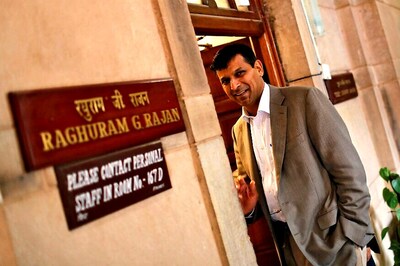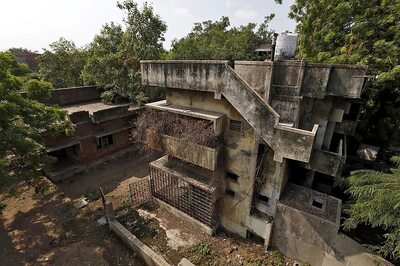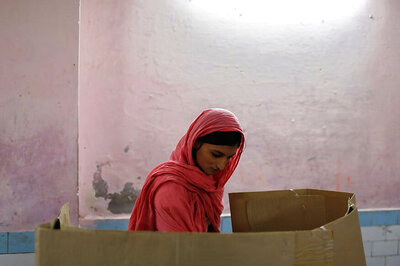
views
New Delhi: Inflation raced past 6 per cent in mid-March to its highest, raising market expectations that the Reserve Bank of India (RBI) may have to respond and sending the rupee to its highest in a month against the dollar.
Indian federal bond yields hit a three-month high of 7.89 per cent after Friday's price data, up from Thursday's close of 7.78 per cent, and traders said the risk the central bank would have to act was growing.
The widely watched wholesale price index rose 6.68 percent in the 12 months to March 15, sharply higher than the previous week's 5.92 percent and well above a market forecast of 5.96 per cent, government data showed.
It was the highest since a reading of 6.69 per cent on January 27, 2007, and the fourth consecutive week above 5 per cent, below which the RBI wants to keep inflation in the fiscal year ending March.
"Inflation number now looks 'ugly'," said Shubhada Rao, chief economist at Yes Bank in Mumbai. "Clearly, this headline number may prompt monetary measures as well.
At first instance, we expect RBI to allow rupee appreciation for now. Some liquidity impounding measures are also likely." The partially convertible rupee initially showed little response to the data but then began to climb, breaking through 40.00 per dollar for the first time in a month and gaining to 39.8500.
It closed at 40.0950/1050 on Thursday. Wholesale inflation has shown a rising trend since early December 2007, driven largely by higher food prices, posing a major policy headache against the backdrop of slowing growth in the broader economy and general elections due by May 2009.
A modest rise in retail fuel prices in mid-February has also contributed to higher inflation, but the latest data caught many off guard. "This is surprisingly high and carries ominous implications for the magnitude of the problem that is likely to dominate policy making for much of 2008," said Saumitra Chaudhuri, economic adviser at domestic rating agency ICRA.
"At the moment, I expect rates to be steady, but if this high trend continues one doesn't know what will happen."
Slowing Growth
The central bank has kept its main lending rate unchanged at 7.75 percent for a year, after raising it five times between June 2006 and March 2007 to stem price pressures in a fast-growing economy.
The RBI's next policy review is scheduled for April 29 and it has also used its cash reserve ratio, the proportion of cash banks have to keep with it on deposit, as a monetary tool to soak up inflation-fuelling excess cash in the past.
Prospects for some policy easing surfaced briefly after the statistics office estimated India's economy to expand 8.7 percent in the fiscal year ending March, slower than an 18-year high of 9.6 percent in the previous year.
A Reuters poll on Friday forecast India's economic growth to slow to 8.1 percent in 2008/09 as moderating consumer demand and higher inflation kicks in.
Factory output in January rose by a lacklustre 5.3 percent from a year earlier, slowing sharply from the previous month and well below double-digit levels seen early in 2007 as tight policy and a stronger rupee hurt demand.
Finance Minister P Chidambaram has said he was ready to take more fiscal steps to moderate inflation and analysts said easing prospects were dwindling. "My sense is that inflation will move up further and perhaps reach 7 percent by June-end," said Abheek Barua, chief economist at HDFC Bank, adding that inflation was largely being fuelled by supply-side problems, a solution for which lay outside monetary policy.




















Comments
0 comment